#MacPherson suspension
Explore tagged Tumblr posts
Text
Culled Compact (1) - Bruno V @DriventoWrite
When the Second World War had come to an end, recovering, replenishing, rebooting and rebuilding became the order of the day for all countries that had been involved in the conflict. In the USA, one of the largest scale operations was the return to producing automobiles by America’s giant car industry sector, which had been converted to producing guns, tanks, airplanes, trucks and such to supply…
#1940&039;s#Cadet#Compact Saloon#Earle S. MacPherson#GM#MacPherson suspension#MacPherson Suspension Strut
0 notes
Text
BYD Atto 3 Premium: The Smart EV Choice
₹29.85 Lakh General Overview The BYD Atto 3 Premium is a compact electric SUV that combines futuristic design, advanced technology, and sustainability. Targeted at eco-conscious and tech-savvy buyers, it offers a premium driving experience with modern amenities and cutting-edge safety features. Its vibrant color options and sleek design make it an appealing choice. Colors: A diverse palette…
#12.8-inch Touchscreen#360° View Camera#521 km Range#60.48 kWh Battery#7 Airbags#Ambient Lighting#Android Auto#Apple CarPlay#BYD Atto 3 Premium#CN95 Air Filter#DC Fast Charging#Dirac HD Sound#Electric Parking Brake#Electric SUV#family-friendly SUV.#front-wheel drive#MacPherson Strut Suspension#Multi-Link Suspension#Panoramic Sunroof#premium interior#regenerative braking#Smart Connectivity#Spacious boot#Sustainable Mobility#Vehicle-to-Load (V2L)#Wireless charging#Zero Emission Vehicle
0 notes
Text
Understanding Car Suspension System
Introduction Have you ever wondered how your car glides smoothly over potholes and bumpy roads, providing you with a comfortable ride? The answer lies in the suspension system, an essential component of any automobile. This system is designed to absorb shocks and maintain contact between the tires and the road surface, ensuring stability, safety, and comfort during your journey. In this…

View On WordPress
#Automobiles#Bushes#Dependent Suspension#Independent Suspension#Linkages#MacPherson Strut Suspension#Shock Absorbers#Springs#Struts#Suspension System
0 notes
Text

You can now have your ``big dream in a small car'' in your hands.
MIRA Turbo TR-XX
New release on October 21st.
MIRA Turbo TR-XX SPECIFICATIONS ENGINE: EB-type model, Water-cooled 4-cycle OHC 3-cylinder in line, Transverse (Turbo charged with Intercooler)
MAXIMUM OUTPUT: 52PS/6500rpm
MAXIMUM TORQUE: 7.1kg-m/4000rpm POWER PER LITER: 95PS
FUEL-EFFICIENCY(at the speed of 60km/h): 31km/L
BRAKES: (Front) Boosted Disk Brakes (Rear) Boosted Leading Trailing Brakes SUSPENSION: (Front) MacPherson Strut, Coil Spring (with Stabilizer)
(Rear) Semi-Trailing, Coil Spring TIRES: 145/70 SR 12 Steel Radial
Can the form exceed the specifications?
It has a form that cuts through the wind. Aero tuned mini that achieved a CD value of 0.35. What accelerates this aero body is a powerful muscle with a maximum output of 52PS/6,500rpm and a maximum torque of 7.1kgm/4,000rpm. The newly developed 3-cylinder intercooled turbo engine produces overwhelmingly high power. The TR Double X is now running with the super spec on the super form.
Who will ride it?
A 3-spoke 365 small-diameter urethane steering wheel exclusively for the TR Double X with a fearless racer-like design. A gun grip type shift lever that can be operated quickly and comfortably. Large 2-meter tachometer and speedometer that can be read instantly.
Graphic type turbo indicator. Everything is for sporty running.
It's a cockpit that caters to the finely honed motor skills.
Car component & console box, digital clock optional
Seat set firmly. Boldly protruding side support. In tight corners, the movement of the upper body is reduced, ensuring reliable handling. Finally, there is a bucket-type front seat exclusively for the TR Double X that reduces fatigue on long drives. The Spartan driving performance has made the seat so authentic. Car combo & speaker & console box are optional
20 notes
·
View notes
Photo
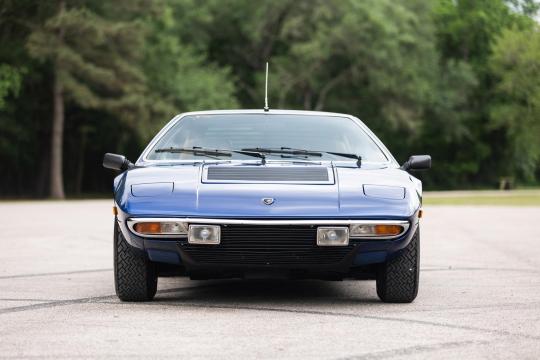



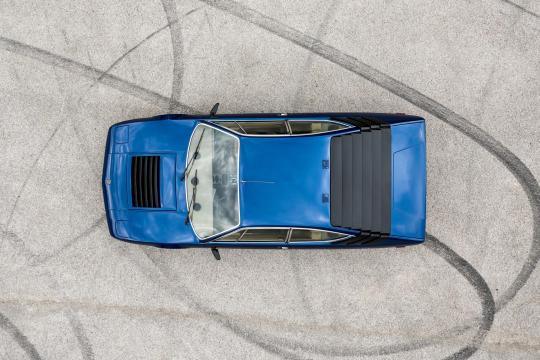
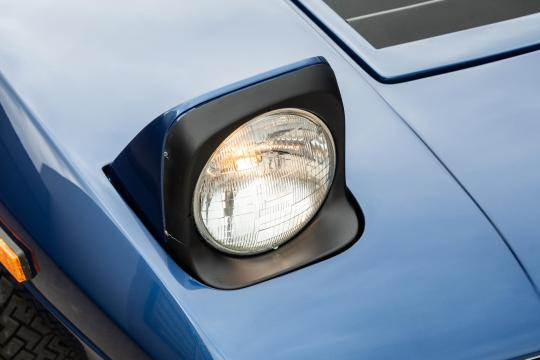
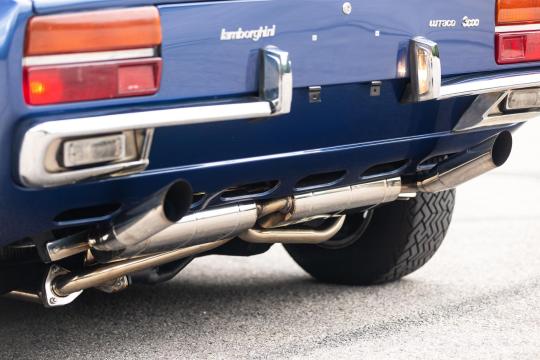
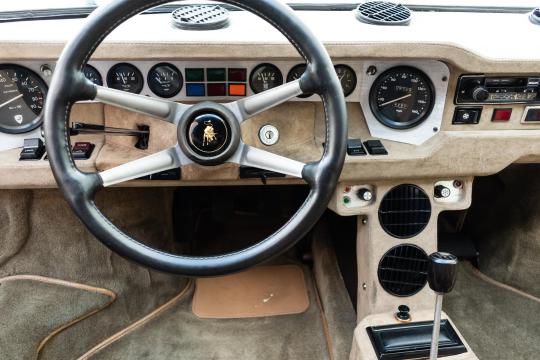
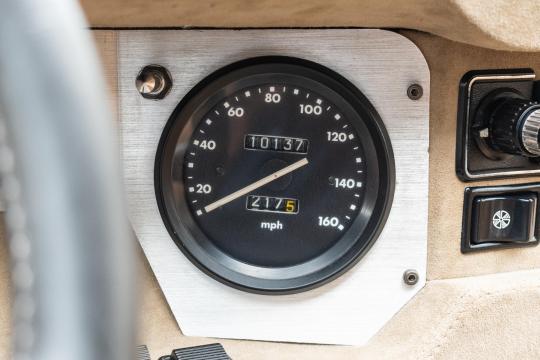
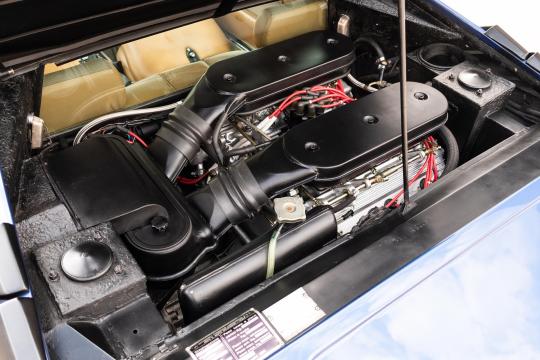
Lamborghini Urraco P300
Despite having been conceptualised as the model to dramatically increase sales and bring Lamborghini greater financial stability, the Urraco P250 proved a commercial flop. Production started in late 1972 following major equipment and floorspace investment. However, by late 1974, less than 500 had been delivered. The Urraco should have gone into production two years earlier than it eventually did. Lamborghini had originally conceived the model with a view to selling over 1000 examples every year.
The disappointing reality left Lamborghini deep in the red, but the Urraco was only partly responsible for a difficult few years.
Compounding the firm’s troubles had been delays for the Countach, a worldwide recession, problems at Lamborghini Trattori and unionised labour, all of which contrived to take their toll on the company founder. In 1972, Ferruccio Lamborghini had sold his tractor company along with 51% of his motor car business. He cashed out of the final 49% in 1974 when the world was in the midst of an energy crisis that slashed demand for gas guzzling machinery.
Throughout this tumultuous period, development work continued on the Urraco. It mainly focused on the Paolo Stanzani-designed V8 engine that had been created especially for the new model at considerable expense. In November 1974, an uprated Urraco P300 was launched at the Turin Motor Show. It immediately went into production alongside the Countach LP400, Espada Series 3 and Jarama S.
Most significantly, the Urraco P300 came with an enlarged three-litre engine. Equally importantly, the power unit now incorporated dual instead of single overhead camshafts.
To take capacity up to three-litres, Paolo Stanzani’s all-alloy 90° V8 was stroked from 53mm to 64.5mm. Bore went unchanged at 86mm for an overall displacement of 2997cc (an increase of 534cc). Compression was dropped from 10.5:1 to 10.0:1. Four new Weber 40 DCNF twin-choke downdraught carburettors were installed to replace the old 40 IDF 1s used previously.
The consequence of these improvements was a dramatic jump in output. Peak power was up 40bhp to 260bhp at an otherwise unchanged 7500rpm. The torque rating also rose considerably; 195lb-ft was now on tap at 3500rpm compared to 166lb-ft at 5750rpm for the P250.
As before, ignition was via two Marelli coils and a single Marelli distributor.
Lamborghini’s five-speed manual gearbox was beefed up to cope with the increased power and torque. Transmission was via a single dry-plate clutch and Lamborghini differential. New damper settings improved the ride, but otherwise little was changed to the existing platform The P300 was based on the same steel monocoque body shell as its predecessor. The engine was housed transversely like the Miura.
Suspension was independent all-round with MacPherson struts, coil springs and telescopic shocks. Anti-roll bars were fitted at either end The twin circuit brake system incorporated unchanged 278mm ventilated Girling discs. Campagnolo’s handsome five-bolt cast magnesium wheels were retained. They measured 7.5 x 14-inches and originally came shod with Michelin XWX tyres.
An 80-litre fuel tank was fitted in the engine bay.
Visually, the only change made to the P300 Urraco was a switch from a two-bank to six-bank radiator cooling vent on the front lid. The rest of Marcello Gandini’s soft wedge creation was unaltered.In a decade not exactly renowned for design longevity, the Urraco proved somewhat timeless. Compared to Bertone’s other mid-engined 2+2, the Ferrari Dino 308 GT4, the baby Lamborghini aged very well, even though it was ultimately outsold by the Maranello product by five to one.Build quality was considerably improved over earlier examples and nowhere was this more apparent than in the cockpit.Bertone had originally been responsible for furnishing the bodyshells, but by the time the P300 was on stream, this work had been taken in-house.
Lamborghini used better quality materials and ensured a higher standard of fit and finish.To this end, P300s were generally equipped with full leather interiors instead of the often garish two-tone leather and fabric combinations seen earlier.
The full width dash layout was still just as haphazard though. The rev counter and speedometer were located at either end of the instrument binnacle and angled in towards the driver. Supplementary gauges and various rocker switches were housed in between.
Lamborghini’s unusual deep dish steering wheel with its four arced horizontal spokes and leather rim was also retained. Like the P250 (which remained in production for a few months longer to use up an overstock of parts), the only update was the gradual shift to anodised black bumpers, wipers and window frames. A more conventional three-spoke steering wheel was also introduced towards the end of production.
#Lamborghini Urraco P300#Ferruccio Lamborghini#Countach LP400#Espada#Jarama S#Miura#Ferrari Dino 308 GT4#Bertone
176 notes
·
View notes
Text
"Chain of Attack" review

Novel from 1987, by Gene DeWeese. It builds on the storyline from The Abode of Life, where the Enterprise travelled through a dimensional gate to an altogether different galaxy. And it seems this plot would be continued in DeWeese's next novel, The Final Nexus. There's been an increasing interconnection between the TOS novels in recent entries. Here, for example, there are appearances of Lt. Tomson (from Dillard's books) and engineer Alec MacPherson (from Crisis on Centaurus).
The plot itself is suspenseful, and there's a mounting tension as the Enterprise gets into even greater danger each time. So it's a novel that reads fast and doesn't get boring. Where it falls short, in my opinion, is in the execution. The style is dry and overly expository, there's barely any humor, and not much in the way of characterization (for example, Spock does little more than recite numbers, until the very end). The middle part gets also a bit repetitive, with one encounter with hostile ships after another, and the setting rarely leaves the bridge. The ending, on the other hand, feels rushed and things get solved all too conveniently. So, even if the story could have been very well a TOS episode, with its theme of communication as basis to avoid conflict, the structure and style (maybe also the expansion of an episode to novel-length) somehow damage the result.
The guest character this time is your regular unsympathetic politician that's making things even harder for Kirk. There are frequent passages told from his point of view, which help to develop him as a character and show his descent into madness. Though as a villain, he's quite ineffectual, and I don't think his presence was necessary for the story. Still, I will take the annoying jerk any day before the annoying Mary Sue, thank you.
Spoilers under the cut:
The Enterprise is investigating a series of gravitational anomalies, using probes designed by Dr. Jason Crandall, who has come along as an observer (though he's more interested in his political career than science). Several probes have been lost through the anomalies, apparently transported parsecs away. Crandall is urging Kirk to abandon the investigation, as they seem incapable of learning anything about the dimensional gates. But suddenly, the Enterprise has the misfortune of passing through an undetected gate... And it has to be the worst possible gate as well, as it transports the ship millions of parsecs away, and further than any probe before.
The stars of the unknown galaxy where they pop up are densely clustered. But the scenario they find around, when they start searching hopelessly for the gate back home, is eerily desolate. All the planets they find, once habitable, appear now completely ravaged by advanced weaponry. To the point that life was wiped away thousands of years ago, never to sprout again due to the high radiation. Everyone is overwhelmed by the thought of such a civilization, so intent in total annihilation. On top of that, there's the fact that the crew may never return to their galaxy, as the gate seems to appear randomly or not at all. Kirk and McCoy are a bit "Meh! Anyway, our whole family is here aboard the Enterprise, so no big deal!" (didn't you have a daughter somewhere, McCoy?). But Crandall has a life, so he's... annoyed, to say the least. Other than this, they encounter a planet with unusual life readings well under the surface, but Kirk considers it's too dangerous to beam down through solid rock, so they forget about it for the time being.
When the Enterprise finally finds another ship, a somewhat obsolete model, they're greeted with a preemptive attack. And once the ship finds out it can't outmatch the Enterprise, it self-destructs with everyone aboard. Later, they find more of these ships, engaged in a battle against a different model. Kirk beams up one of the aliens from the new ship, before it explodes. The alien is humanoid but vaguely reptilian, and as soon as he wakes up... he explodes as well, injuring a nurse. They're more careful with the other three aliens rescued, and remove their suicide implants before waking them up. However, the creatures are frustratingly uncooperative, and refuse to even talk. Then Spock brings up his ultimate weapon: a PowerPoint presentation. Okay, it's not a PowerPoint, but close enough: a visual representation of everything the Enterprise has been through since it passed through the gate. The aliens finally understand they're not enemies, and start talking. The translator begins to collect data, and after a while, they're able to communicate. The reptilian aliens are the Hoshan, in perpetual war with another race, the Destroyers, whom they blame for the total destruction of planets in the sector. They've grown so distrustful of other ships, that they shoot first, and ask questions never.
Therefore, Kirk's next step is beaming up one of the so-called "Destroyers". Crandall thinks this is a good moment to attempt mutiny. He had misinterpreted McCoy's familiarity with Kirk as insubordination, and thought the doctor would go along with his plan to replace Kirk and Spock, whom Crandall considers incompetent and too lenient towards the Destroyers. Of course, Crandall ends up arrested in his quarters. Kirk goes ahead with his plans. The alien, this time, looks rather avian, and says his race are the Zeator. His version of the story is pretty much a reverse of the Hoshan's. Each race blames the other for destroying the worlds, despite neither having the sophisticated technology to do so, or having been around for so long. Their ongoing war is thus the result of a tragic misunderstanding, and lack of communication. Kirk sends the aliens back to their ships, in the hope that they'll reach a truce.
Sure enough, both the Hoshan and the Zeator start collaborating, and ask Kirk to be a mediator for their peace treaty. Only that they bring a full armada of ships to the peace talks, which seems... suspicious. After seeing the superior technology of the Enterprise, they've concluded that they're the actual destroyers of worlds. Crandall, who's been allowed in the bridge again, and has turned suicidal out of desperation, attacks Sulu just as he was about to raise the shields, so the enemy fire can destroy the ship. The Enterprise manages to escape, but badly damaged, and limps back to the initial spot of the gate. It's clear now that neither the Hoshan nor the Zeator built the gates, and they'll be of no help.
Just as they're passing by the planet with the unusual life readings, the whole crew is suddenly beamed down to the planet's underground. They all appear inside a huge cavern, surrounded by a force field that isolates them from a vacuum. And their equipment is out of reach, in the surrounding vacuum. Then the new aliens start transporting individuals to a different area, and try to learn their language through several lessons. But Kirk knows that, without their translators, it will take an eternity to communicate with them. When Spock and Crandall's turn arrives, the Vulcan seizes the opportunity to mind-meld with an alien woman. He notices she's somehow connected to a central computer, and through it, to hundreds of other aliens in suspended animation (that was the origin of the strange life readings). Spock achieves a sort of collective consciousness with the aliens and the whole crew of the Enterprise. Then, Spock induces the transporter operator to put them near the equipment, instead of back inside the force field. Crandall appears next to the equipment, but Spock is too far away and dying in the vacuum (though I don't know how they can survive even a single second IN a vacuum... Whatever). Crandall has understood through the mass mind-meld from before that Kirk and the crew never meant him ill, and realizes the wrong of his ways. In a final redemptive act, Crandall throws a survival gear at Spock, and then collapses. Armed with the translator, Spock is transported again near the aliens, and can communicate with them at last, and explain their predicament.
Everything is explained in the last few pages. The new aliens, called Aragos, are native also to the Milky Way, and arrived in that galaxy thousands of years ago through a gate. They took refuge under that planet from some attackers (the actual world destroyers? it's not very clear). And there they found the hibernation technology and the computer that controls it, so they waited for centuries until somebody came through the gates to rescue them. The central computer has a monitoring system for the gates, and thanks to this, the Enterprise finds the gate back home, and also brings the Aragos to their original planet. The Hoshan and Zeator, arranged around the gate, let the Enterprise pass at the last moment, once convinced that they're not responsible for the destruction of those worlds. A while later, Crandall, who is amazingly NOT dead after all, recovers in sickbay, and is promised an ambassador post at the Aragos planet.
Spirk Meter: 0/10*. Nothing comes to mind. Kirk seems to be closer to McCoy, actually. Though it's not enough to make me consider it a McKirk example.
5 notes
·
View notes
Text

With its ambitious mix of science fiction and slasher horror, Time Cut aims to deliver a thrilling, time-bending twist on the traditional slasher genre. Directed by Hannah MacPherson and co-written by MacPherson and Michael Kennedy, this film stars Madison Bailey as Lucy Field, a high school senior who uses a makeshift time machine to travel back to 2003 to save her sister from a gruesome murder. Yet, despite a compelling premise, the film ultimately feels overly derivative of Totally Killer (2023) — a movie with an almost identical concept of time-traveling to prevent a murder in the past. This lack of originality, coupled with inconsistent pacing, predictable plot developments, and underdeveloped characters, holds Time Cut back from reaching its potential. https://www.youtube.com/watch?v=a8F6yN56zB0 Premise: Time Cut introduces Lucy Field (Madison Bailey), an inventive but isolated high school senior struggling with the trauma of her older sister Summer’s murder. Obsessed with the crime, Lucy spends her time tinkering with gadgets in her garage-turned-laboratory, hoping to understand what happened on that fateful night in 2003. While her grief feels palpable, Lucy’s character arc is disappointingly shallow, with her motivations simplified to her connection with her sister. This emotional depth gets lost amid the chaotic plot twists and genre clichés that unfold. When Lucy accidentally activates a time machine she built, she’s transported back to 2003, just days before her sister’s murder. This setup offers initial intrigue, especially as Lucy witnesses the quirky, early-2000s fashion, music, and technology, bringing a nostalgic element to the film. Unfortunately, the script relies on shallow nods to the past without delving deeper into the era or using it to build tension. Performances: Madison Bailey does her best as Lucy, delivering a performance that leans into her character’s determination, vulnerability, and courage. However, the role lacks enough emotional range, which prevents the audience from truly connecting with her journey. Antonia Gentry plays Summer, whose relationship with Lucy is central to the plot but is never fully explored. Their bond is largely conveyed through one-dimensional flashbacks and brief interactions, which do little to deepen their dynamic. Quinn (Griffin Gluck), is an unnecessary addition to the storyline, mainly existing to add a few humorous moments. The lack of chemistry between the characters feels even more strained given Quinn’s shallow backstory and function as a stereotypical “nerdy but charming” sidekick. Supporting characters like Gil (Michael Shanks) and Kendra (Rachael Crawford) are thinly written and serve primarily as plot devices to guide Lucy through her journey. Lack of menace: Time Cut attempts to provide a slasher experience, complete with an enigmatic killer stalking the characters. The film’s killer, however, is woefully underwhelming, lacking both menace and a distinctive backstory. The kills, although creative in setup, come across as tame and uninspired due to overly cautious editing and quick cuts that undermine any potential for genuine horror. In a genre known for its inventive deaths and dark humor, Time Cut feels almost sanitized, shying away from the gore and suspense that would lend credibility to its slasher label. Way too similar to Totally Killer: A glaring flaw in Time Cut is its resemblance to Totally Killer. Both films revolve around time-traveling back to a past decade to prevent a family member’s murder. Totally Killer managed to infuse its story with humor and self-awareness, playing up the absurdity of slasher tropes and balancing tension with witty commentary. By contrast, Time Cut struggles to find its own voice, leaning too heavily on the same premise without bringing a unique perspective. This lack of originality stands out painfully, and it’s difficult not to compare the two, especially given how Totally Killer succeeded in areas where Time Cut falters. Poor pacing: Another flaw lies in its pacing. The first half of the movie drags with prolonged scenes of exposition that add little to the story, while the latter half tries to pack in too many twists and turns. This uneven structure leaves the audience feeling disoriented, as crucial scenes are rushed or glossed over to make room for unnecessary filler. For a film centered on the urgency of preventing a murder, there’s a surprising lack of tension or momentum pushing the story forward. Lucy’s journey back in time is handled in a way that feels more like a plot device than a genuine exploration of the consequences of time travel. Opportunities to explore the mechanics and limitations of her time machine are ignored, leaving the sci-fi element feeling flat. This oversight diminishes the stakes, as there’s little sense of what she truly risks by changing the past or what ramifications her actions could have in the present. Direction and tone: Hannah MacPherson’s direction is competent but lacks flair. The film’s visuals and production design fail to evoke the atmosphere necessary for a time-travel slasher. Scenes in 2003 have minimal visual distinction from the present day, undermining the nostalgic impact and time-travel premise. More creative cinematography could have accentuated the contrast between the two timelines, drawing viewers into Lucy’s mission. The film’s tone is also inconsistent. While Totally Killer embraced a tongue-in-cheek approach, Time Cut vacillates between lighthearted moments and earnest attempts at horror, ultimately succeeding at neither. As a result, the movie fails to create a cohesive atmosphere that could have enhanced its impact on the viewer. Overall: Time Cut is ultimately a forgettable entry in the horror genre, marred by its lack of originality and missed potential. Madison Bailey’s commendable efforts and the intriguing premise are wasted in a derivative plot that pales in comparison to the superior Totally Killer. The film’s time-travel mechanics and slasher elements feel underdeveloped, and the pacing issues make it difficult for viewers to fully immerse themselves in the story.
0 notes
Text
Time Cut : playing with destiny

Netflix is set to release Time Cut, a new horror film, on October 30, 2024, just in time for Halloween. This multi-genre movie blends elements of horror and sci-fi, and features a cast led by Madison Bailey (Outer Banks) and Antonia Gentry (Ginny & Georgia). The film is directed by Hannah Macpherson, known for her work on School Spirits, while the screenplay is penned by Michael Kennedy, who previously wrote the horror-comedy Freaky .
Plot Overview
Time Cut follows Lucy Field, portrayed by Madison Bailey, a teenage girl who discovers a time machine. She travels back to the early 2000s with the goal of preventing her sister's murder. The film's logline hints at a mix of suspense and nostalgia, promising a thrilling ride as Lucy confronts a vicious killer in her quest to save her sister .
Cast
The film boasts an ensemble cast, including:
Madison Bailey as Lucy Field
Antonia Gentry as Jessica
Michael Shanks as Gil
Griffin Gluck
Summer Howell as Jessica
Additional supporting roles include actors like Rachael Crawford and Sydney Sabiston .
Production Details
Filmed in secret between July and August 2021 in Winnipeg, Manitoba, Time Cut has been kept under wraps until its recent announcement. The project was produced by ACE Entertainment, which has a history of successful Netflix titles .
Genre and Style
Described as “Back to the Future meets Scream,” the film promises to deliver a unique blend of time travel and slasher elements, appealing to fans of both genres. The creative team behind Time Cut has a track record of infusing traditional horror tropes with innovative twists, ensuring that this film will stand out in Netflix's Halloween lineup .
With its intriguing premise and talented cast, Time Cut is poised to be a significant addition to Netflix's slate of horror offerings this fall.
1 note
·
View note
Text

The Bestune T77 is one of the new cars in Dubai you might like if you're looking for best car to buy in UAE with strong looks, luxurious interiors, powerful performance, and increased safety. With the 1.5L turbo engine and Macpherson independent suspension power the remarkable drive of the Bestune T77, providing increased stability and a more pleasant ride.
SUVs have powerful engines and big inside spaces, which make the ride safe and fun for both the person driving and the people riding along. By presenting a huge variety of automobiles, from luxury vehicles to more affordable options, these automobile dealers cater to a diverse range of consumer preferences and demands.
0 notes
Text

The Bestune offers a driving experience that is unmatched because to its superb combination of performance, safety features, and elegance. Whether you like to live in a city or go off-road, the Bestune is the perfect traveling companion for all your road journeys. Choose the best setting for unmatched driving enjoyment. Bestune's automobiles are a good option for individuals looking to purchase the greatest SUV in the United Arab Emirates.
The T77 is one of the new cars in Dubai you might like if you're looking for best SUV in UAE with strong looks, luxurious interiors, powerful performance, and increased safety. With the 1.5L turbo engine and Macpherson independent suspension power the remarkable drive of the Bestune T77, providing increased stability and a more pleasant ride.
0 notes
Text
Earl MacPherson and the MacPherson Strut Suspension System
Earl MacPherson, an American automotive engineer, is best known for designing the MacPherson strut, a key component in modern vehicle suspension systems. His invention revolutionized car suspension design due to its simplicity, cost-effectiveness, and performance advantages. Who was Earl MacPherson? Earl S. MacPherson (1891–1960) had a background in mechanical engineering, and he worked for…
0 notes
Text

The Strongest, Fastest, Latest New Model - Dengeki Impression
Lancer Evolution III
Full disclosure of WRC specifications
All the conditions to beat the rival!
Lan Evo's participation in the WRC will be the Safari Rally, which will be held from April 6th. No WRC title is on the line for this year's Safari. Kenjiro Shinozuka entered there driving a machine. Of course, the rival will be Yoshiro Fujimoto of STI85 Celica. The odds are 50/50. The weak point is the team, which operates with one-tenth the number of people at TTE.
Winning with one-tenth the number of staff is the potential of the machine and the technique of the driver.
click becomes important. One of them
The potential of the machine is completely finished as one of the best in the WRC world. A misfiring system (a device that pressurizes even if the accelerator is turned off with a turbo engine), which is not installed on the Evo II, is added, and it is said that this will increase the speed per kilometer-second.
________________________________________________
A rally journalist sees it this way Toshiyuki Iijima
Although it is behind Toyota and Subaru in terms of winning the WRC championship, it can be said that Lancer is the one to overthrow the points of these two companies. There is a very high possibility that either Toyota or Subaru will lose points and get severely burned due to Lancer's success.
Lancer Evolution III is fast. It will be a big hit after debut. Every event you participate in has a chance to win.
Even the Asia-Pacific players will be in a deadly battle with the Impreza in a marketing showdown in Asia.
_______________________________________________
PIC CAPTIONS
Shinoken, K. Ericsson, and others are aiming for the world's champ and are thoroughly pursuing their runs. This year, the top spot on the podium is just around the corner
WRC Mitsubishi that dropped the product
N is becoming more fearless. This form is the result of our pursuit of speed!
The transmission is an X-track 6th gear. Reliable operability in the rally field is emphasized...
It becomes a cockpit devoted to driving functions. It's also fun to buy an RS and finish the WRC machine in the image!
299 horsepower is the rule of power display. In fact, it seems to generate 370 to 400 horsepower.
Keep an eye on Shinoken and Ericsson's performance this year
________________________________________________
SPEC BOX
Lancer Evolution III WRC Spec
full length(mm) 4310
Width(mm) 1695
Height (mm) 1400
Wheelbase (mm)2510
Vehicle weight (kg) 1200+
Transmission X-track 6 speed
Engine Straight 4 DOHC turbo
Displacement(cc) 1997
Bore x Stroke (mm) 85.0X88.0
Compression ratio 8.5
Maximum output(ps/rpm) 299/6250
Maximum torque (kgm/rpm) 45.0/4000
Suspension(F)macpherson strut
Suspension(R)multi link
Brake(F)Ventilated disc
Brake(R)Ventilated disc
Steering Rack-and-pinion
Tire Michelin
5 notes
·
View notes
Text
The latest Toyota Yaris 1.5 G AT price in the Malaysian market starts at RM 91,600. The Yaris 1.5 G AT is a versatile and efficient model with a monthly instalment of RM 952 for 84 months and a down payment of RM 18,300. This vehicle is equipped with a 1.5L petrol engine, an in-line 4 cylinder with a 16 valve DOHC configuration, delivering a power output of 106 hp at 6000 RPM and a torque of 140 Nm at 4200 RPM. The engine displacement is 1496 cc, making it a robust choice for various driving needs. It features power steering with a tilt steering column and a rack and pinion steering gear type, along with an adjustable steering column and electric power steering type. The chassis control systems include ventilated discs for the front brake and discs for the rear brake, complemented by a MacPherson strut front suspension and a torsion beam rear suspension. The gearbox is a CVT type with variable speed. The Yaris 1.5 G AT rides on 16-inch alloy wheels with 195/50 R16 radial tyres and has a spare tyre of the same size and material. The car's dimensions include a length of 4140 mm, a width of 1730 mm, a height of 1475 mm, a wheelbase of 2550 mm, a front tread of 1460 mm, and a rear tread of 1445 mm, with a kerb weight of 1140 kg. It features a seating capacity of 5 seats, a turning radius of 5.1 meters, and a fuel tank capacity of 42 liters. This model offers a range of standard features making it an attractive option for those seeking reliability and performance in a compact car. Your question is: Toyota Yaris 1.5 G AT? Which question will you have about this car? Let’s justify these. There, we are including the major questions and answers about this car. So, let’s start now. What is the monthly instalment for the Yaris 1.5 G AT? The monthly instalment for the Yaris 1.5 G AT is RM 952 over a period of 84 months. How much is the down payment for the Yaris 1.5 G AT? The down payment required for the Yaris 1.5 G AT is RM 18,300. What is the price of Toyota Yaris 1.5 G AT? The latest Toyota Yaris 1.5 G AT price in the Malaysian market starts at RM 91,600. What are the engine specifications of the Yaris 1.5 G AT? The Yaris 1.5 G AT features a 1.5L petrol engine with an in-line 4 cylinder and 16 valve DOHC configuration, delivering 106 hp at 6000 RPM and 140 Nm torque at 4200 RPM. What type of transmission does the Yaris 1.5 G AT have? The Yaris 1.5 G AT is equipped with a CVT (Continuously Variable Transmission) gearbox. What is the fuel tank capacity of the Yaris 1.5 G AT? The Yaris 1.5 G AT has a fuel tank capacity of 42 liters. How many seats does the Yaris 1.5 G AT have? The Yaris 1.5 G AT can comfortably seat up to 5 passengers. What are the braking and suspension systems in the Yaris 1.5 G AT? The Yaris 1.5 G AT features ventilated discs for front brakes, discs for rear brakes, a MacPherson strut front suspension, and a torsion beam rear suspension. Advantages and Disadvantages AdvantagesDisadvantagesFuel-efficient 1.5L petrol engineRelatively high down paymentComfortable seating for 5 passengersLimited fuel tank capacity (42 liters)Modern CVT gearbox for smooth drivingModerate power output (106 hp)Compact size suitable for urban drivingBasic wheel size and tyre optionsAdvanced braking and suspension systemsNo wheel covers includedElectric power steering for ease of handlingTurning radius could be smallerAdjustable steering column for driver comfortKerb weight could be lighter
0 notes
Text
Understanding Suspension Systems and Their Components: The Backbone of Vehicle Comfort and Control

A vehicle’s suspension system is crucial for ensuring a smooth ride, maintaining control, and enhancing safety. This blog delves into the intricacies of suspension systems, exploring their types, components, and the importance of regular maintenance.
The Basics of Suspension Systems
How Suspension Systems Work
A suspension system is designed to maximize the friction between the tires and the road surface, providing steering stability with good handling and ensuring passenger comfort by absorbing and damping shock loads from road conditions.
Main Functions
Support Weight: Suspension supports the weight of the vehicle.
Absorb and Dampen Shocks: Reduces the impact of road irregularities.
Maintain Tire Contact: Ensures that tires remain in contact with the road for optimal traction.
Control Vehicle Direction: Facilitates proper handling and steering stability.
Key Components of Suspension Systems
Springs
Springs are the primary component that absorbs energy from bumps and dips in the road.
Coil Springs: Common in most vehicles, they compress and expand to absorb shock.
Leaf Springs: Typically found in trucks and heavy vehicles, consisting of layers of metal bound together.
Torsion Bars: Use twisting motion to absorb impact, often used in front suspensions.
Air Springs: Use air pressure to provide a smooth ride, commonly found in luxury vehicles.
Shock Absorbers (Dampers)
Shock absorbers dampen the oscillations from the springs, preventing excessive bouncing.
Hydraulic Shocks: Use hydraulic fluid to absorb shock energy.
Gas-Charged Shocks: Incorporate gas to reduce aeration and improve performance.
Struts: Combine a shock absorber with a coil spring in one unit, often used in front suspensions.
Control Arms
Control arms connect the suspension to the vehicle’s frame, allowing for controlled motion and support.
Upper and Lower Control Arms: Provide pivot points for the suspension to absorb vertical motion.
A-Arms: Shaped like an “A,” these are used to ensure stability and support.
Ball Joints
Ball joints act as pivot points between the control arms and the wheels, allowing for smooth steering and suspension movement.
Stabilizer Bar (Anti-Roll Bar)
The stabilizer bar reduces body roll during cornering, connecting opposite wheels through short lever arms linked by a torsion spring.
Bushings
Bushings are rubber or polyurethane components that absorb shock and reduce vibration between metal parts.
Types of Suspension Systems
Independent Suspension
Each wheel on the same axle moves independently, providing better ride quality and handling.
MacPherson Strut: A common type of independent suspension for front wheels.
Double Wishbone: Offers excellent handling, used in performance and luxury vehicles.
Dependent Suspension
Wheels are linked, so movement on one side affects the other.
Solid Axle: Common in trucks and heavy-duty vehicles for durability and load-carrying capacity.
Semi-Independent Suspension
A compromise between independent and dependent suspensions, providing a balance of performance and cost.
Importance of Suspension Maintenance
Regular suspension maintenance is essential for vehicle safety, comfort, and performance. Key maintenance tasks include:
Inspecting and Replacing Worn Components: Regularly check and replace worn shocks, struts, and bushings.
Wheel Alignment: Ensure wheels are properly aligned to prevent uneven tire wear and handling issues.
Checking Tire Pressure and Wear: Proper tire maintenance can significantly impact suspension performance.
Lubricating Moving Parts: Keeps the suspension components working smoothly.
Signs of Suspension Problems
Excessive Bouncing: Indicates worn shocks or struts.
Nose Dives or Rear Squats: Suggests suspension issues when braking or accelerating.
Uneven Tire Wear: May point to alignment or suspension component problems.
Pulling to One Side: Could indicate issues with control arms or alignment.
Steering Difficulties: May be caused by worn suspension parts or alignment issues.
Conclusion
A well-maintained suspension system is crucial for vehicle safety, comfort, and performance. Understanding how your suspension works, recognizing signs of trouble, and performing regular maintenance can ensure a smoother ride and better handling. Keep your suspension system in top shape to enjoy a safer and more comfortable driving experience.
Regular checks and prompt repairs not only enhance the longevity of your vehicle but also ensure that every ride is smooth, controlled, and enjoyable.
0 notes
Text
Best SUV in UAE - Bestune T-77
The Bestune T77 is one of the new cars in Dubai you might like if you're looking for best SUV in UAE with strong looks, luxurious interiors, powerful performance, and increased safety. With a starting price of AED 82,500, the 1.5L turbo engine and Macpherson independent suspension power the remarkable drive of the Bestune T77, providing increased stability and a more pleasant ride.
Key features:
Performance
1.5 L Turbo Engine
Electric-controlled Shifting System
7 Speed DCT Gearbox
Max Speed (km/h): 168
170 HP
Technology
Automatic Parking Assistance
BESTUNE Smart-Link System
Multi-functional steering wheel
Lane Keep Assist
360 Degree Camera
EPB
Interior Features
Instrument-7 inch LED Screen (Premium)
10.25 inch LED Screen
Multi-function Steering Wheel
Inner rear-view mirror with manual anti-dazzling system
The driver-side one-touch anti-trap windows
Automatic window glass lifting system when locking
6-way manual adjusted driver seat
4-way manual adjusted front passenger seat
Exterior Features
Panoramic Sunroof
Height Adjusting Headlamp
High-position brake system
Electric adjusting outer mirror adjustment
Electric heating outer mirror adjustment
Connectivity and Technology
Bluetooth Phone control system
Internet Connections (Premium)
Remote Control System with APP (Premium)
For more information, visit the website- https://bestuneae.com

0 notes
Text

With its ambitious mix of science fiction and slasher horror, Time Cut aims to deliver a thrilling, time-bending twist on the traditional slasher genre. Directed by Hannah MacPherson and co-written by MacPherson and Michael Kennedy, this film stars Madison Bailey as Lucy Field, a high school senior who uses a makeshift time machine to travel back to 2003 to save her sister from a gruesome murder. Yet, despite a compelling premise, the film ultimately feels overly derivative of Totally Killer (2023) — a movie with an almost identical concept of time-traveling to prevent a murder in the past. This lack of originality, coupled with inconsistent pacing, predictable plot developments, and underdeveloped characters, holds Time Cut back from reaching its potential. https://www.youtube.com/watch?v=a8F6yN56zB0 Premise: Time Cut introduces Lucy Field (Madison Bailey), an inventive but isolated high school senior struggling with the trauma of her older sister Summer’s murder. Obsessed with the crime, Lucy spends her time tinkering with gadgets in her garage-turned-laboratory, hoping to understand what happened on that fateful night in 2003. While her grief feels palpable, Lucy’s character arc is disappointingly shallow, with her motivations simplified to her connection with her sister. This emotional depth gets lost amid the chaotic plot twists and genre clichés that unfold. When Lucy accidentally activates a time machine she built, she’s transported back to 2003, just days before her sister’s murder. This setup offers initial intrigue, especially as Lucy witnesses the quirky, early-2000s fashion, music, and technology, bringing a nostalgic element to the film. Unfortunately, the script relies on shallow nods to the past without delving deeper into the era or using it to build tension. Performances: Madison Bailey does her best as Lucy, delivering a performance that leans into her character’s determination, vulnerability, and courage. However, the role lacks enough emotional range, which prevents the audience from truly connecting with her journey. Antonia Gentry plays Summer, whose relationship with Lucy is central to the plot but is never fully explored. Their bond is largely conveyed through one-dimensional flashbacks and brief interactions, which do little to deepen their dynamic. Quinn (Griffin Gluck), is an unnecessary addition to the storyline, mainly existing to add a few humorous moments. The lack of chemistry between the characters feels even more strained given Quinn’s shallow backstory and function as a stereotypical “nerdy but charming” sidekick. Supporting characters like Gil (Michael Shanks) and Kendra (Rachael Crawford) are thinly written and serve primarily as plot devices to guide Lucy through her journey. Lack of menace: Time Cut attempts to provide a slasher experience, complete with an enigmatic killer stalking the characters. The film’s killer, however, is woefully underwhelming, lacking both menace and a distinctive backstory. The kills, although creative in setup, come across as tame and uninspired due to overly cautious editing and quick cuts that undermine any potential for genuine horror. In a genre known for its inventive deaths and dark humor, Time Cut feels almost sanitized, shying away from the gore and suspense that would lend credibility to its slasher label. Way too similar to Totally Killer: A glaring flaw in Time Cut is its resemblance to Totally Killer. Both films revolve around time-traveling back to a past decade to prevent a family member’s murder. Totally Killer managed to infuse its story with humor and self-awareness, playing up the absurdity of slasher tropes and balancing tension with witty commentary. By contrast, Time Cut struggles to find its own voice, leaning too heavily on the same premise without bringing a unique perspective. This lack of originality stands out painfully, and it’s difficult not to compare the two, especially given how Totally Killer succeeded in areas where Time Cut falters. Poor pacing: Another flaw lies in its pacing. The first half of the movie drags with prolonged scenes of exposition that add little to the story, while the latter half tries to pack in too many twists and turns. This uneven structure leaves the audience feeling disoriented, as crucial scenes are rushed or glossed over to make room for unnecessary filler. For a film centered on the urgency of preventing a murder, there’s a surprising lack of tension or momentum pushing the story forward. Lucy’s journey back in time is handled in a way that feels more like a plot device than a genuine exploration of the consequences of time travel. Opportunities to explore the mechanics and limitations of her time machine are ignored, leaving the sci-fi element feeling flat. This oversight diminishes the stakes, as there’s little sense of what she truly risks by changing the past or what ramifications her actions could have in the present. Direction and tone: Hannah MacPherson’s direction is competent but lacks flair. The film’s visuals and production design fail to evoke the atmosphere necessary for a time-travel slasher. Scenes in 2003 have minimal visual distinction from the present day, undermining the nostalgic impact and time-travel premise. More creative cinematography could have accentuated the contrast between the two timelines, drawing viewers into Lucy’s mission. The film’s tone is also inconsistent. While Totally Killer embraced a tongue-in-cheek approach, Time Cut vacillates between lighthearted moments and earnest attempts at horror, ultimately succeeding at neither. As a result, the movie fails to create a cohesive atmosphere that could have enhanced its impact on the viewer. Overall: Time Cut is ultimately a forgettable entry in the horror genre, marred by its lack of originality and missed potential. Madison Bailey’s commendable efforts and the intriguing premise are wasted in a derivative plot that pales in comparison to the superior Totally Killer. The film’s time-travel mechanics and slasher elements feel underdeveloped, and the pacing issues make it difficult for viewers to fully immerse themselves in the story.
1 note
·
View note